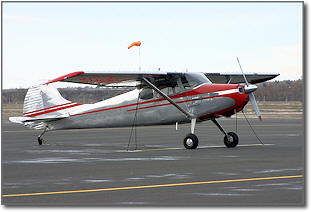Subscriber question:
"I am a student pilot and have been renting Cessna 172's. Some of them have significant hours on the airframes (as many as 22,000). My question is this: Even though they are "air worthy" when does metal fatigue and normal wear and tear factor in? Or is there really nothing to be concerned about if the 100 hour inspection passes and the maintenance is kept up?" - Randy B.
Bob:
“Aging aircraft issues are relevant across our entire aviation fleet, not just in the Cessna family. Your questions are valid and are being constantly reviewed by both industry and FAA engineers.
 When the holder of an Inspection Authorization or an Authorized Repair Station signs off an aircraft as airworthy it means that: the condition of an aircraft, airframe, engine, propeller, appliance or component part where it conforms to its approved type design, is in a condition for safe operation. Remember it’s a two prong definition – conformity with type design and in condition for safe operation.
When the holder of an Inspection Authorization or an Authorized Repair Station signs off an aircraft as airworthy it means that: the condition of an aircraft, airframe, engine, propeller, appliance or component part where it conforms to its approved type design, is in a condition for safe operation. Remember it’s a two prong definition – conformity with type design and in condition for safe operation.
During the annual inspection (or 100 hour inspection), each aircraft must conform to the type certificate under which it was built. A type certificate is the way we approve the design of a specific aircraft, aircraft engine, aircraft propeller or other major aviation-related product. A type certificate authorizes a manufacturer to make the product in the specific way covered by the certificate.
Conformity is determined by the annual. Safe condition for safe operation is determined by correction of any items found not to conform during the inspection.
Additionally, the Cessna 172 is non-pressurized and therefore isn’t subject to the stress of a pressurized airframe. Corrosion is inspected at least annually or sooner in the case of an aircraft that’s held out for hire.
By flying with a reputable company who maintains their aircraft according to published guidance and doing due diligence on your preflight, you can feel confident that you are flying a safe aircraft.”
